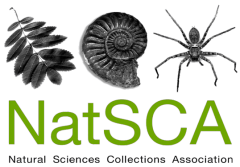Mounted skeletons in museums need to be moved occasionally for a variety of reasons. Sometimes within the museum site, but sometimes extensive road travel is required. In all instances it is best to at least partly disassemble the skeleton but all bones should be cleaned, labelled and photographed first in situ and extensive notes should be made as the skeleton is taken apart to aid re-assembly at a later date. However, dismantling should also be kept to the minimum possible to prevent unnecessary over-handling and damage being done to the bones in the process of taking them apart and reassembling them later. For in-stance as a minimum the skull, mandible, cervical vertebrae, tail and limbs would normally be removed but the skull and mandible might still be kept wired together and the bones of each limb may stay completely on its supporting mount, depending on how the specimen is mounted. Some bones will have been secured to the metalwork with irreversible methods in the past that may preclude some disassembly anyway. A good method for moving the complete ribcage (ribs, sternae and associated vertebrae plus the pelvic bones) is to build a wooden frame around the whole skeleton at the start and suspend the ribcage from a central beam using cotton tape, securing it to the uprights of the frame as well. This allows supporting limbs to be removed. Specimens should be transported on foam to absorb some vibrations, and the wooden frame can usually be secured to the side of the van. However, with road transport as much attention should be paid to the route taken and how the vehicle is driven as to how the specimen is packed.
